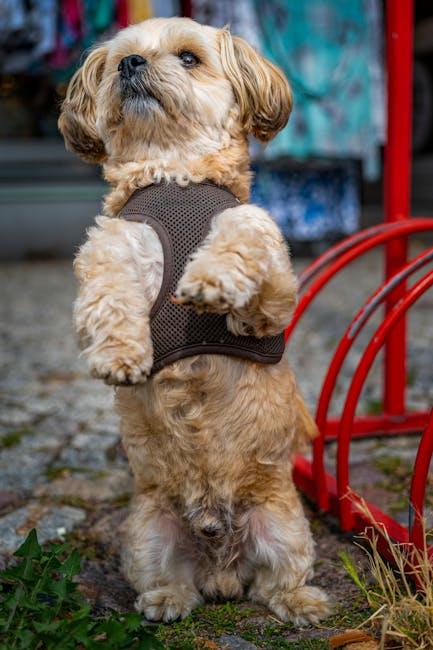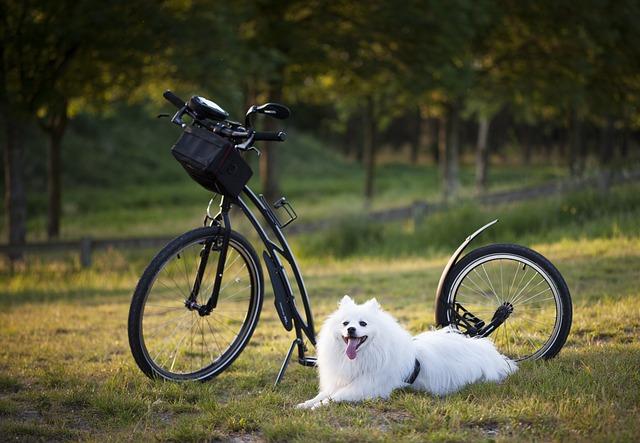How to calm a dog that barks at every person who passes by

Barking is a natural form of communication for dogs, but when it becomes incessant, particularly at every passerby, it can pose challenges for both pet owners and their neighbors. Understanding the underlying causes of this behavior is the first step in addressing it effectively. In this article, we will explore practical strategies to help calm a dog that barks at every person who passes by. By implementing these techniques, you can create a more peaceful environment for your dog and enhance the overall harmony within your home. Whether you’re dealing with a young pup or an older dog, these tips will guide you in promoting more controlled and manageable behavior.
Understanding the Reasons Behind Your Dogs Barking Behavior
Dogs bark for various reasons, and understanding these can be the key to addressing their behavior effectively. Barking is a natural form of communication for dogs, but when it becomes excessive, it’s crucial to identify the underlying causes. Some common reasons for barking at passersby include:
- Territorial Instincts: Dogs are naturally protective of their home and may bark to alert you of potential intruders.
- Fear or Anxiety: Some dogs bark out of fear or anxiety, especially if they haven’t been properly socialized.
- Attention-Seeking: If a dog receives attention every time they bark, they may learn to bark more to get what they want.
- Boredom: A lack of mental and physical stimulation can lead to excessive barking as a way to release pent-up energy.
By identifying the root cause of your dog’s barking, you can tailor your approach to calming them. Consider providing more exercise, using positive reinforcement to reward quiet behavior, or consulting a professional trainer for more persistent issues. Understanding your dog’s motivation is the first step towards a quieter and more peaceful home environment.

Implementing Effective Training Techniques to Reduce Excessive Barking
Training your dog to reduce excessive barking requires a combination of consistency, patience, and understanding of your pet’s behavior. Here are some effective techniques to help you manage this common issue:
- Identify Triggers: Observe your dog’s behavior to determine what specifically triggers their barking. This could be people passing by, other animals, or even specific sounds. Understanding these triggers is crucial in addressing the root cause of the barking.
- Use Positive Reinforcement: Reward your dog with treats, praise, or playtime whenever they remain calm in situations that usually cause them to bark. This reinforces the behavior you want to encourage.
- Desensitization: Gradually expose your dog to the stimulus that causes them to bark, starting at a distance where they are calm. Slowly decrease the distance while rewarding calm behavior, helping them become less reactive over time.
- Teach the “Quiet” Command: When your dog starts barking, let them bark a few times, then gently say “Quiet” and reward them when they stop. Consistency is key in making this command effective.
Implementing these techniques requires patience and persistence. Over time, with consistent training, your dog can learn to remain calm and reduce unnecessary barking at passersby.

Creating a Calm Environment to Minimize Triggers for Barking
One of the most effective ways to address your dog’s tendency to bark at passersby is by fostering a serene atmosphere within your home. Start by identifying and minimizing environmental triggers that could cause anxiety or excitement in your pet. Here are some practical strategies to help create a more peaceful setting:
- Soundproofing: Consider using heavy curtains or blinds to muffle outside noises that might provoke barking. Soundproofing your windows can further reduce the auditory stimuli.
- Visual Barriers: If your dog tends to bark at sights from the window, place decorative screens or frosted films to obscure the view. This limits their ability to see passersby, reducing the likelihood of barking.
- Comfortable Space: Ensure your dog has a cozy, designated area in the house where they feel secure. This can be a crate or a comfortable bed placed in a quiet corner, away from the commotion of daily activities.
- Calming Scents: Use calming scents like lavender or chamomile in diffusers to help soothe your dog. These scents can have a tranquilizing effect, making the environment more relaxing.
By implementing these measures, you can significantly decrease the external stimuli that often lead to excessive barking, helping your dog feel more at ease and less reactive to the hustle and bustle outside.
Using Positive Reinforcement to Encourage Quiet Behavior
One effective way to address excessive barking in dogs is through the application of positive reinforcement. This technique involves rewarding your dog for displaying desired behaviors, such as remaining quiet when someone walks past. To begin, identify a reward that your dog finds motivating—this could be a favorite treat, toy, or verbal praise. The key is to offer this reward immediately after your dog exhibits calm behavior, reinforcing the idea that staying quiet results in positive outcomes.
- Timing is crucial: Ensure the reward is given as soon as your dog shows calmness.
- Consistency matters: Be consistent with this approach to help your dog associate quiet behavior with rewards.
- Gradual exposure: Start by rewarding quiet behavior in less distracting environments, gradually increasing the difficulty as your dog improves.
- Avoid punishment: Refrain from scolding your dog for barking, as it can increase anxiety and worsen the behavior.
Over time, your dog will learn to associate the presence of strangers with positive experiences rather than a need to alert you. With patience and persistence, positive reinforcement can be a powerful tool in curbing unwanted barking.



